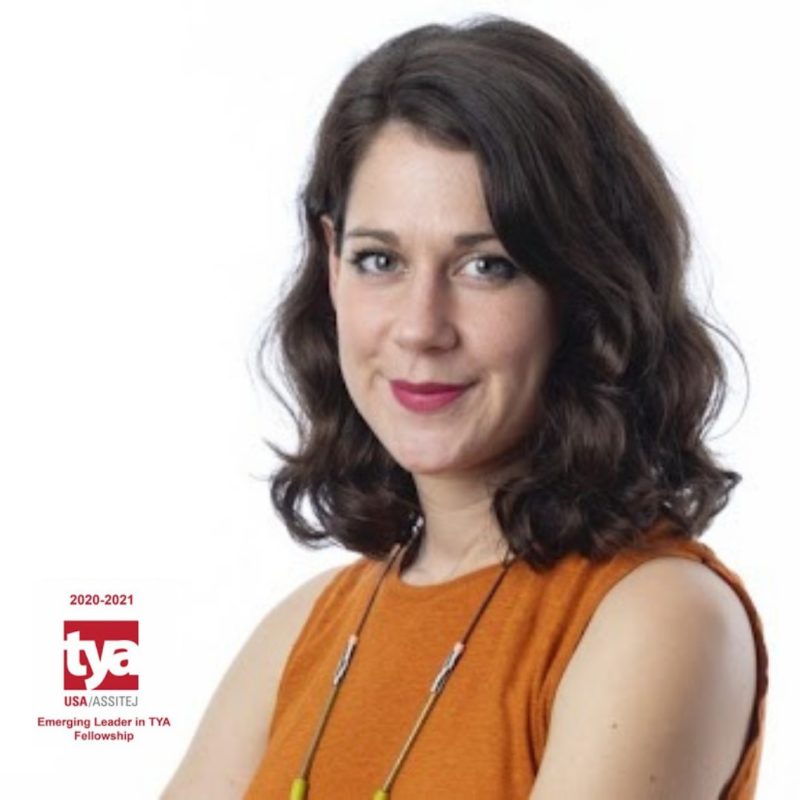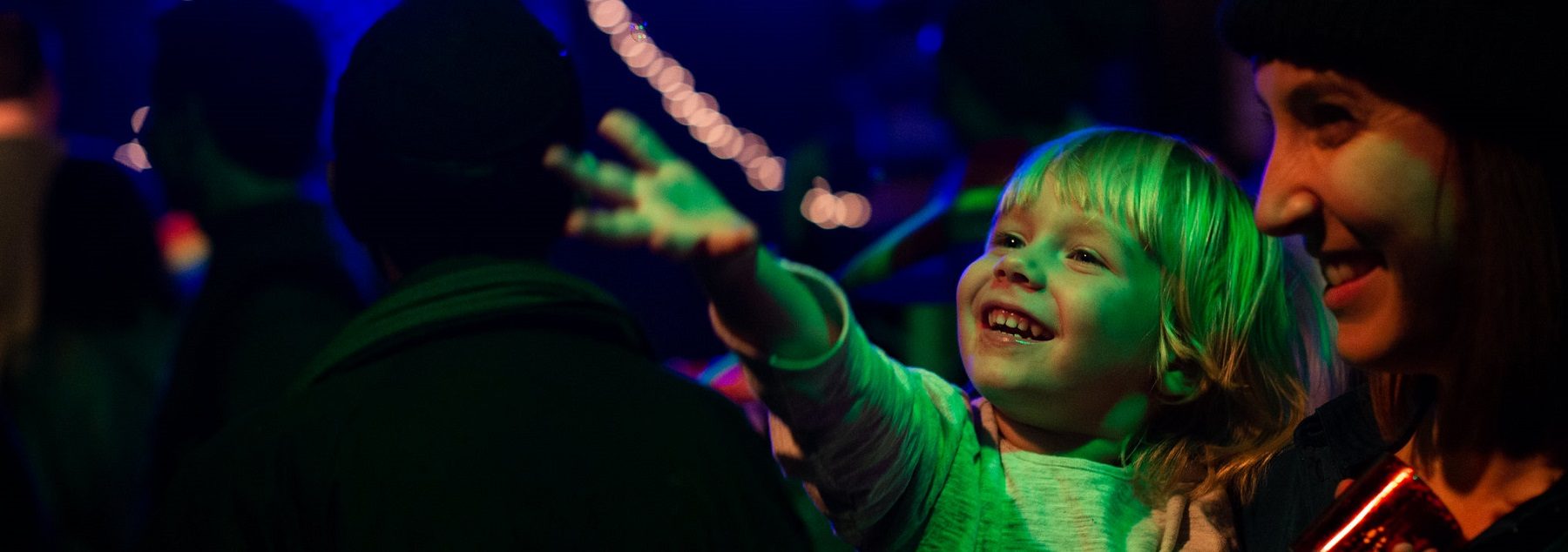
Introduce yourself and tell us a bit about how you personally engage with the TYA world!
-

My name is Rebecca Gerrard. I’m a theatre artist from Scotland who moved to the USA in 2016. I’ve been collaborating on projects for young audiences since 2012 in both Scotland and the USA as a deviser, writer, performer, facilitator, director and stage manager.
What areas of interest have you cultivated and/or discovered during your fellowship?
-

We began our fellowships during the pandemic so for me, the fellowship provided first and foremost a peer support-system of other artists who were also impacted by the closing down of our industry. We were all in similar points in our careers where we had considerable experience behind us but were looking for the next step. Our monthly meetings helped to process and share ideas in a really supportive environment and I’m so grateful to have been in such an outstanding cohort.
I initially applied to the fellowship to research hospital arts programming and was paired with an incredible mentor. I’ve felt for a long time that artists can be of use in non-arts environments because we think and approach problem-solving creatively and often in ways that others haven’t considered, we thrive in cross-discipline collaboration and we know how to maximize resources.
For those of us who are also teaching artists, we approach participants from a place of abundance, not deficit-which I think is key in any socially-engaged role.
Over the course of the fellowship I decided to begin my journey towards qualifying as a Child Life Specialist – a practitioner who works with hospitalized children and their families- because I wanted to gain deeper knowledge of the hospital environment, how it impacts children and their families and how I could apply my work as an artist to this non-arts role. Additionally, as someone who has worked with people in schools and prisons and currently learning about hospitals, I am starting to see connections between the impact of these institutions and the crucial role the arts play for people within them.
Any future dreams, plans, or endeavors in progress related to these explorations?
-

To become a certified child life specialist on a team that facilitates top quality programming and interventions for children and families in hospitals, and as the field of child life expands, in non-traditional, non-healthcare settings.
What advice would you give to folx who are new to the TYA field and don’t know where to start getting involved?
-

Don’t consider TYA as a stepping stone to ‘professional theater’, TYA is and should be regarded as a credible field of arts in it’s own right. Anyone who is new to this field will quickly learn that children are the most lively and discerning audience, so making work that they love is an extremely satisfying challenge, you might find adult audiences a bit boring after making work for children.
Never underestimate or patronise your audience. Theater is for people of all ages, even babies! Creating magical and imaginative experiences for children and their caregivers, sometimes for the first time in that child’s life, is an honor.
From your perspective as an “emerging leader”, what do you hope to see in the future of TYA?
-

I hope to see a shift in what is considered to be the ‘best quality work’ in children’s theater. Historically and still presently, white European work, sometimes regardless of quality, is considered the top tier of children’s theater. Admittedly as a white European artist, I didn’t come to realise this until living in the USA, where the colonial nature of elevating white work felt more apparent, but as I continue to reflect and learn, I’ve reframed my time back home and clearly see that this issue reaches beyond the USA and throughout Europe. I’ve been really excited to see the shift that’s happened in the six years that I’ve lived here, a shift led by artists of color, to center work by and leadership of artists of color.
I’d also like to see the centering of more work led, created and performed by disabled artists. As with white work, there has also been an abundance in representation of non-disabled artists. As TYA artists, we are in the business of creating imaginative worlds and experiences that all kids should be able to see themselves in. White kids, non-disabled kids and kids that are gender conforming, get to see themselves reflected back in so many artistic disciplines, oftentimes work that is esteemed as the ‘highest’ or most ‘universal’ art, leaving everyone else to’ make the leap’ and use their imaginations to see themselves in people who don’t look or move like them. I agree with the many artists and activists who have said this already, it’s time for the kids who have historically always seen themselves reflected back, to make that leap too.
Is there anything else you would like the field to know about you or your fellowship experience?
-

I strongly believe that being part of a cohort and gaining mentorship is valuable for anyone at any point of their career and should happen more often.
Where can the field best connect with you and your work beyond TYA/USA?
-

I’m terrible at social media, so for now best to reach me on rebeccasophiegerrard@gmail.com
More about Rebecca

Rebecca Gerrard
2020/21 TYA/USA Emerging Leaders in TYA Fellow
Rebecca Gerrard is a Scottish trained contemporary theatre maker now based in New York City. With a background in devised, experimental theatre and live performance, Rebecca Gerrard now predominantly creates work for young audiences. Rebecca believes that the process of devising and the aesthetics of live art and avant garde theatre are the ideal building blocks for making immersive, interactive, high-quality sophisticated work for young people. Over the past 10 years Rebecca Gerrard has worked with companies and artists that have pushed the possibilities of theatre for young audiences, namely Starcatchers and Katy Wilson in the UK as well as NYC-based companies Spellbound and Trusty Sidekick. Since moving to NYC in 2016, Rebecca has made and performed her first puppet show The Naughty Penguin in schools, daycares, community centres and theatre venues across NYC. Rebecca has also collaborated as a key deviser on Spellbound’s main stage shows The World Inside Me, Shakespeare’s Stars and performed in Spellbound’s Wink in both NYC and Miami.


